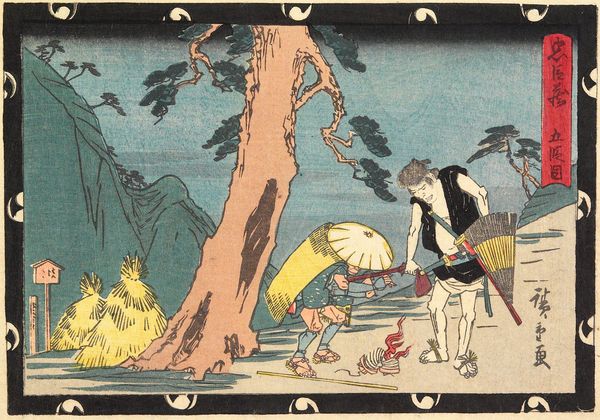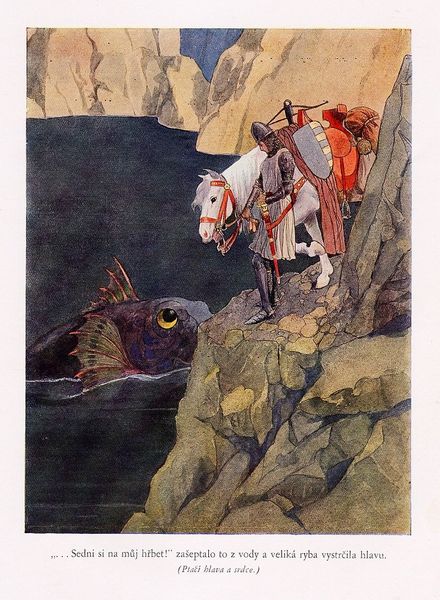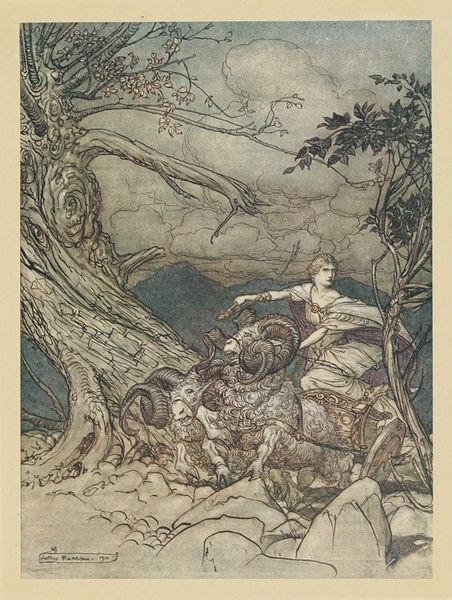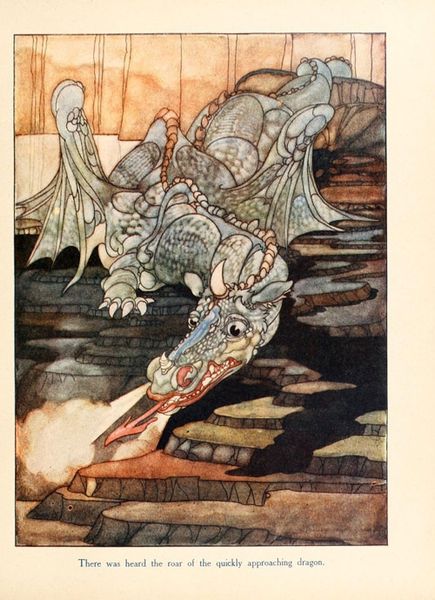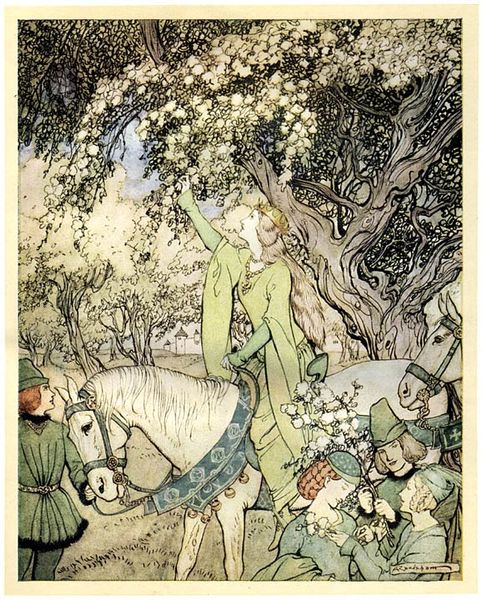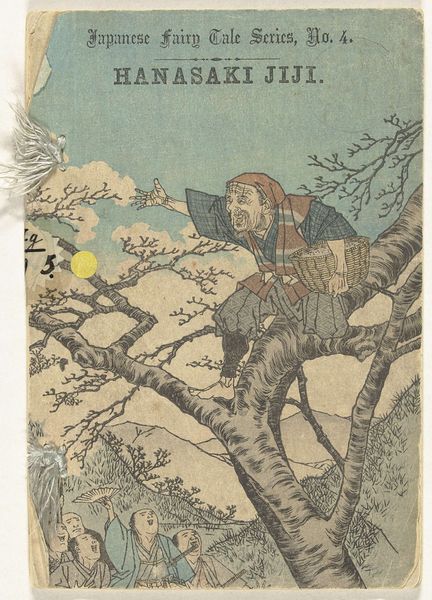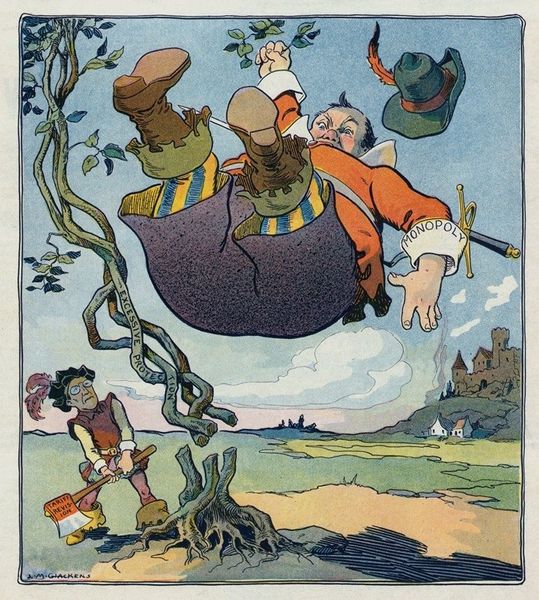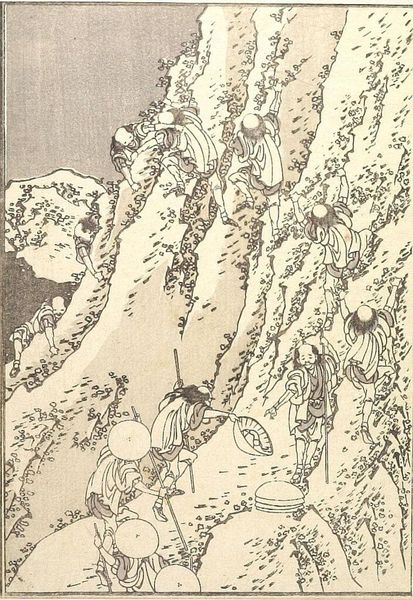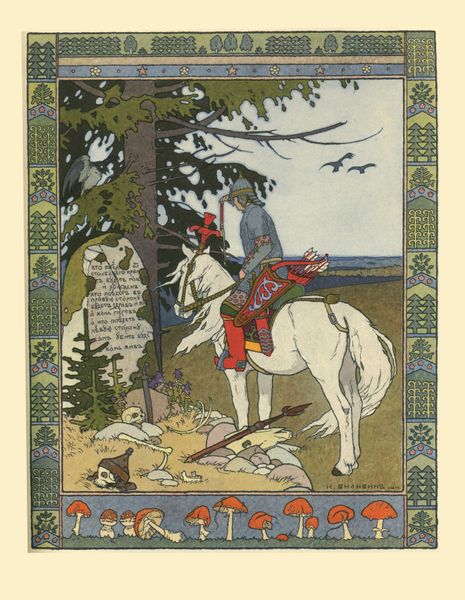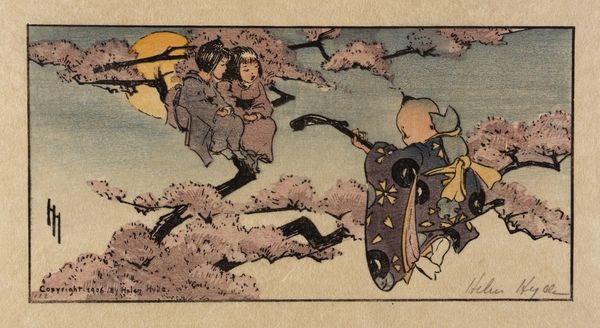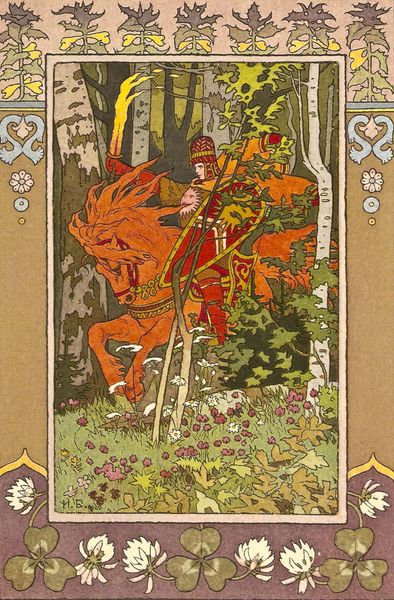
mixed-media, painting
#
mixed-media
#
art-nouveau
#
painting
#
landscape
#
fantasy-art
#
figuration
#
naive art
#
symbolism
Copyright: Public domain
Curator: Right now, we’re standing in front of Harry Clarke’s, “The Year’s at the Spring”, made around 1920. What catches your eye? Editor: Well, my first impression is one of layers and textures— it’s almost like looking through lace, that dreamy art nouveau aesthetic, but what is this medium, exactly? It feels very tactile and precise. Curator: That’s part of Clarke’s magic, isn’t it? He was a master of stained glass and illustration. “The Year’s at the Spring” uses a mixed-media approach: I believe he combined watercolor, gouache and ink. The layering gives that incredible sense of depth despite its flat perspective. And that detail, the precise, meticulous application! Editor: Absolutely. And given his work in stained glass, the lead lines here give this picture such structural support: they allow all of this symbolic weight to be upheld. Is it really the ‘spring’, or perhaps just a manufactured pastoral ideal sold to an eager public ready for distraction during post-war trauma? I find it impossible not to consider this when analyzing the work of any artist of this era. Curator: Oh, you always bring it back to materiality! Although I have to admit, that contrast – the idyllic surface versus the real-world turmoil beneath is… compelling. But, let’s consider also how the landscape feels like an otherworldly garden, with those lute-playing figures and playful imps dancing. Clarke's attention to detail also echoes back to illuminated manuscripts. Everything he made seems to have absorbed these influences from disparate cultures! Editor: And even something like the musical instruments point back to production: How were those crafted? Who was given a voice, both figuratively and literally, in the composition of music itself? Thinking in that way also helps to explain the monkey observing from the lower left... Curator: Indeed. As observers of the human condition, both through artistic output, consumption, and the literal, labor-intensive nature of manufacturing and enjoying these luxury items during times of great economic disparities, maybe Clarke offers us, via that playful simian reflection on our world, a gentle nudge toward social change. Editor: A revolution by way of beauty. I can get on board with that. Well, I’ve definitely looked at this in a new way. Thank you! Curator: And thank you! Let’s go on and explore some more now.
Comments
No comments
Be the first to comment and join the conversation on the ultimate creative platform.

